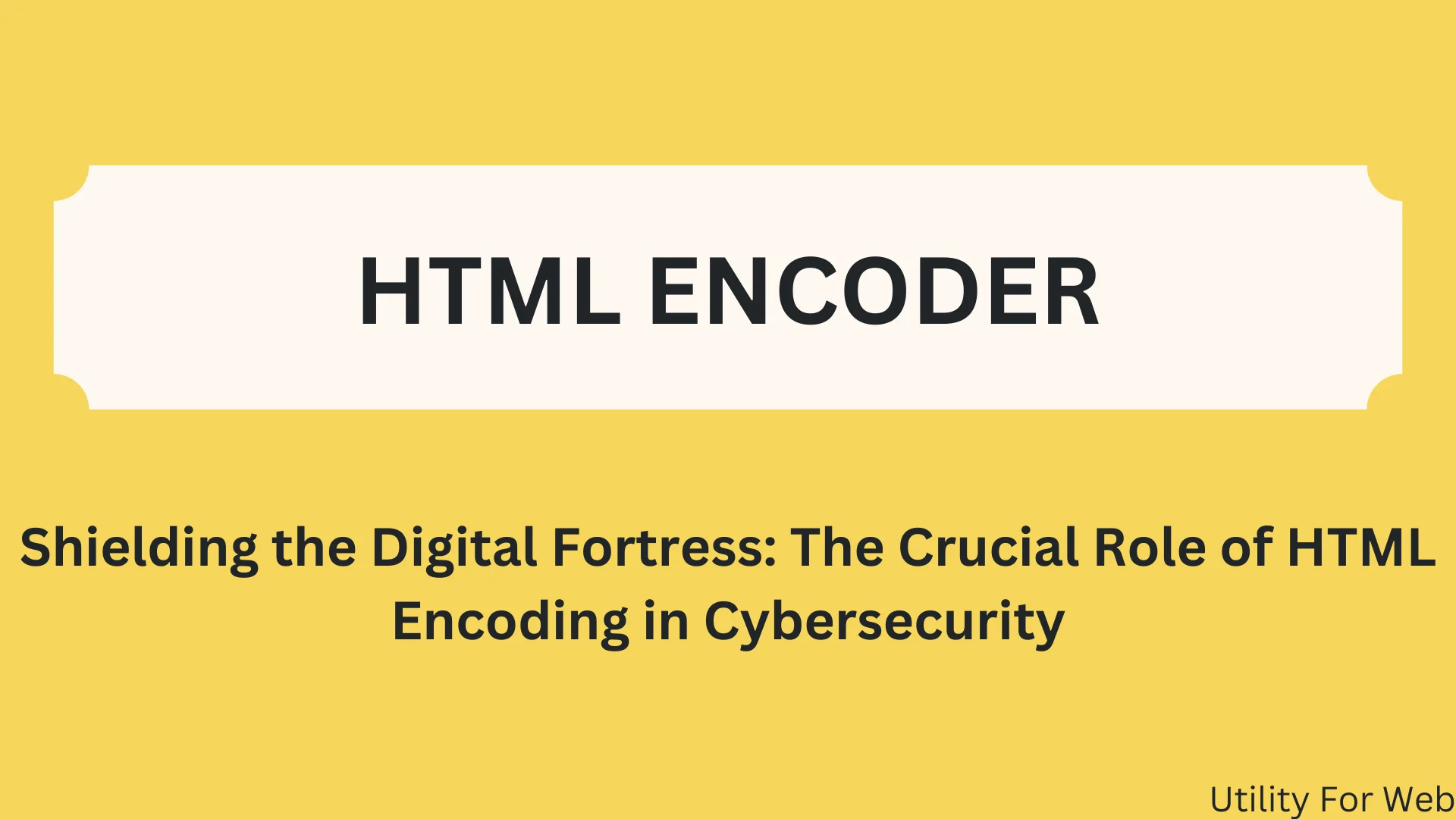
HTML Encoder – Encode HTML Online with the Best HTML Encoding Tool
In the ever-evolving landscape of cybersecurity, HTML encoding stands as a fundamental pillar. It transforms special characters in HTML into their respective character entity codes, preventing them from being misinterpreted by web browsers. This process is crucial for maintaining data integrity and protecting web applications from various types of attacks, particularly cross-site scripting (XSS) attacks.
Understanding HTML Encoding
HTML encoding involves converting characters that have special significance in HTML, such as <, >, &, and ", into their corresponding entity codes (<, >, &, and "). This change guarantees that the characters are shown accurately in the browser without being executed as HTML code.
The Role of an HTML Encoder
An HTML encoder is a tool designed to automatically convert special characters in HTML into their entity codes. This conversion is essential for developers who want to ensure that their web content is safe from XSS attacks. By using an HTML encoding tool, developers can protect their applications from malicious scripts that can exploit vulnerabilities in web browsers.
Importance of Encoding HTML Online
Encoding HTML online using reliable tools simplifies the encoding process, making it accessible and convenient for developers. Online HTML encoders provide a straightforward way to encode HTML on the fly, ensuring that any input provided by users is safely encoded before being rendered by the browser. This approach significantly reduces the risk of XSS attacks, as it prevents malicious code from being executed.
Practical Applications of HTML Encoding
- User Input Sanitization: Whenever users input data into a web application, it’s crucial to sanitize and encode this data before displaying it. An HTML encoding tool ensures that any potentially harmful characters are converted into safe entities, protecting the application from XSS vulnerabilities.
- Data Integrity: HTML encoding preserves the integrity of data transmitted between the client and server. By encoding special characters, developers can ensure that the data remains consistent and is not misinterpreted by browsers or servers.
- Email Security: Encoding HTML in emails is essential to prevent code injection attacks. When HTML emails are not properly encoded, attackers can insert malicious scripts that execute when the email is viewed, compromising the recipient’s security.
Benefits of Using an HTML Encoder
- Enhanced Security:The primary benefit of using an HTML encoder is enhanced security. By converting special characters into their corresponding entities, developers can prevent XSS attacks that exploit vulnerabilities in web applications.
- Consistency: HTML encoding ensures that web content is displayed consistently across different browsers and platforms. This consistency is crucial for maintaining a positive user experience and avoiding rendering issues.
- Efficiency: Using an HTML encoding tool streamlines the development process. Developers can quickly encode HTML without manually converting each character, saving time and reducing the risk of errors.
Choosing the Right HTML Encoding Tool
When selecting an HTML encoding tool, it’s essential to choose one that is reliable and easy to use. Look for tools that offer:
- Ease of Use: The tool should have a simple interface that allows developers to quickly encode HTML without extensive configuration.
- Accuracy: The tool should accurately convert all special characters into their corresponding entity codes, ensuring complete protection against XSS attacks.
- Performance: The tool should perform efficiently, handling large volumes of data without significant delays.
Conclusion
In the realm of cybersecurity, HTML encoding is a critical practice for safeguarding web applications from XSS attacks and ensuring data integrity. By leveraging an HTML encoder and encoding HTML online, developers can protect their applications and users from malicious threats. The use of a reliable HTML encoding tool not only enhances security but also improves the consistency and efficiency of web development.


